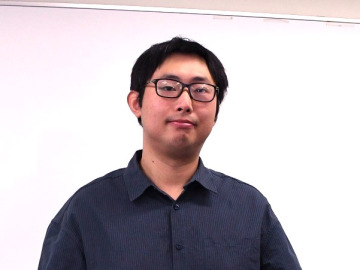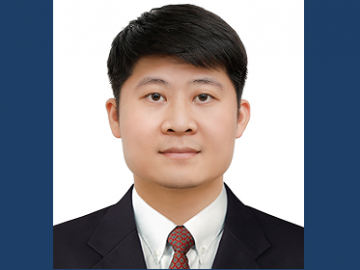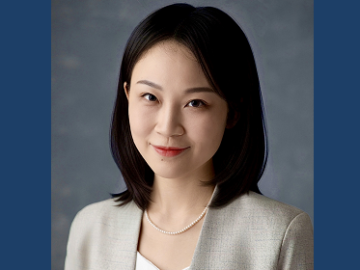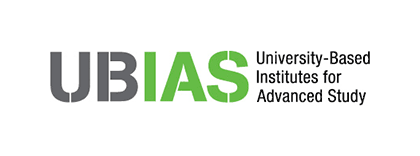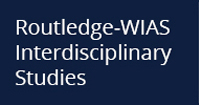A history of cooperation
I have a longstanding interest in the ways Christians and Muslims have interacted over the years, particularly in Asia, and this is the focus of my research here at WIAS.
Our assumptions about Christian-Muslim Relations tend to be tinged by modern conceptions that there’s a lot of conflict, which is not historically always true. In fact, relations between Christians and Muslims in East Asia have generally been quite positive. In China and Japan there’s been a lot of cooperation – from the 16th to the 19th centuries, there were largely very amicable relations between Christians and Muslims. I think this is probably because Christians were able to view Muslims as something familiar in comparison to the other sorts of people they were meeting. They also shared religious values such as monotheism in these polytheistic environments.
Some of the texts from Christians in China praise Muslims for introducing beef to China, for example, which I imagine Christian missionaries from Europe were hankering for, being three years’ journey from home. Others tell us of cooperation and friendships between Christians and Muslims. We don’t have many records of Muslims in Japan – we know they were here, but generally Muslims came with Christians as staff or slaves. Because of their low social status, we don’t have many written records about them, so it’s difficult to say what interactions were taking place outside of those labor relations.
Early records
Portuguese traders and Roman Catholic missionaries in the 16th and 17th centuries brought Muslims to Japan. Christianity was banned and trade with some countries was limited, but relations with Europe continued through the Dutch, and there are records showing that the Dutch brought Muslim traders to Japan from elsewhere in Asia.
It’s not until the late 19th century that we have records of independent Muslim visitors. So there’s really not much to say in Japan other than Christians and Muslims were coming to the country together for shared commercial reasons and as part of these unbalanced labor structures.
From the early 20th century, interactions between Christians and Muslims started to become more religious in focus. Muslims were trying to make converts in Japan, as were Christians, so Christian-Muslim relations also began to embrace more religious elements.
20th century tension
Until now, I have limited my studies up to around 1912, the end of both the Qing Dynasty in China and the Meiji Period in Japan, but my current study extends to 1945. In my current research, I expect to find that there was an increase in tension between Christians and Muslims throughout the early 20th century – this is what I would predict based on the trends that I’m seeing at the end of the previous period. Interactions between Christians and Muslims were not exactly turning sour, but there’s certainly more conflict.
We know that a lot of Muslim thinkers coming to Japan in the 20th century were involved in anti-imperialist and pan-Asian political movements. Many Muslims wanted to challenge British rule in India, for example, and some early sources link Christianity with imperialism. So I imagine that I will see an increase in tension and a decrease in amicable relations during the first half of the 20th century reflecting the increasingly politicized ways that Christians and Muslims were viewing each other.
In the 18th century with China’s expansion westward there was conflict with Muslims on China’s borders. Christian missionaries present at the Chinese court were mostly observing and leaving written descriptions of conflicts between the Chinese and Muslims rather than getting involved themselves. Then in the 19th century there were Muslim rebellions in China. Christian visitors from Europe sought to establish relations with the sultanate of Du Wenxiu (1823-1872), for example, predicting that his lands were to become a new Muslim superpower. In any case, Christian-Muslim relations in China really exploded in the 19th century when there was a huge influx of missionaries, and it’s the first time in East Asia that we see whole books authored by Christians on Islam and Muslims in China.
Accidental research
I got into this field by accident, to be honest. Originally my interest was mainly in the history of Christianity in Japan. And then I heard about the University of Birmingham and Brill’s Christian-Muslim Relations: A Bibliographical History project through Prof. Douglas Pratt (University of Auckland). I began to conduct some research to contribute to the project and found that there was a lot of material available. Of course, there aren’t many substantial texts (at least before the 19th century), it’s all based on loose threads – you can find a little reference here and a little reference there.
I’ve had a small grant since 2020 from the Japan Society for the Promotion of Science (JSPS) to conduct this research up until 1912. However, moving to WIAS, new aspects of the project are emerging – I am extending the timeline from 1912 to 1945, and turning the project from papers into a book.
Starting out, what I really liked was that there’s not much written on the topic. No scholars are working on Christian-Muslim relations in Japan. There’s lots of work on Christianity in Japan, and on Islam in Japan, but no one is looking at the interactions between the two. On Christian-Muslim relations in China there is a little bit more. I enjoy taking these almost inconsequential and often overlooked references to Christian-Muslim interactions scattered across a vast number of texts and building them into a bigger picture of what was actually going on.
It’s exciting – it’s rare to find something in academia that no one is working on, but that has enough to begin writing on.
Side projects
In addition to working on Christian-Muslim relations, the history of Christianity in Japan, and environmental history, I’m engaged in a number of side projects. Some people know me from the Digital Orientalist, an online magazine about applying digital methods to the study of Asian history, where I was Editor-in-Chief from 2019 to 2021. I continue in the role of Editor for Northeast Asian Studies there and also serve on its Managerial Board. The magazine targets people with very little knowledge of digital methods – we call it “low level” digital humanities – for people who don’t want to write a load of code, but want to use accessible tools to help them analyze their sources. Recently, I’ve also helped the British & Irish Association of Practical Theology launch a new digital periodical called Practical Theology Hub.
The WIAS environment
Waseda and WIAS provide a completely different environment from where I’ve worked before. The sheer quantity of resources available are crucial for facilitating my ability to conduct research. The library is incredibly well stocked, the research space is ample, the support from the staff is unparalleled – I have thus far found myself wanting of nothing.
Since WIAS places research at the centre, I have been finding my first few months here very productive. I was able to spend two months this summer researching in the U.K. and participating in conferences in Europe. Two months would be unimaginable in any other position due to teaching constraints and things like that, so I’m really, really thankful to have this sort of opportunity and really enjoying being here.
Waseda and WIAS offer an environment in which I hope and imagine I will be able to thrive.
取材・構成:Robert Cameron
協力:早稲田大学大学院政治学研究科J-School



